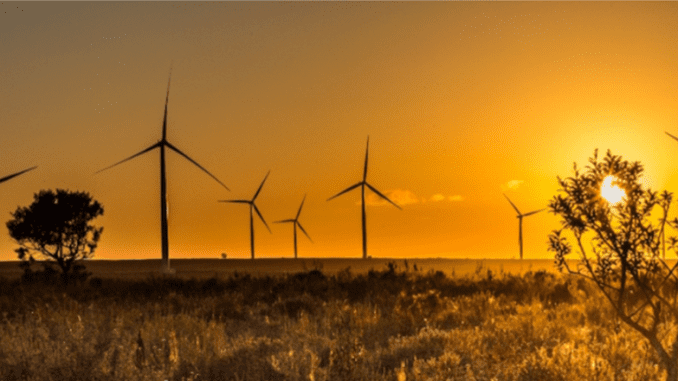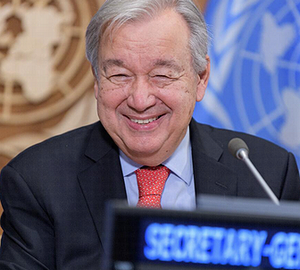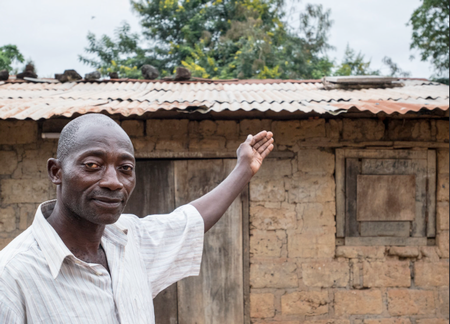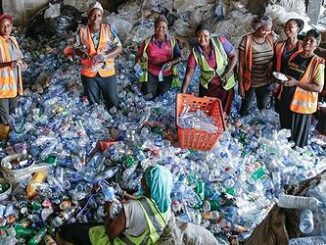
NEW YORK, New York, September 26, 2021 (ENS) – Commitments of US$400 billion in new finance and investment to increase renewables and access to electricity and clean cooking techniques were announced Thursday at a critical United Nations energy summit during Climate Week.
Climate Week, September 20-26, is hosted by the Climate Group in conjunction with the UN, and in partnership with UNFCCC COP 26 and the City of New York.
At the first leader-level meeting on energy under the auspices of the UN General Assembly in 40 years, more than US$400 billion in new finance and investment was committed by governments and the private sector.
As world leaders struggle to meet the demands of the Paris Climate Accord and also supply electricity to their people, there now exists what UN Secretary-General Antonio Guterres calls “a double imperative … to end energy poverty and to limit climate change.”
Aimed at supplying power to the 780 million people now living in energy poverty, this effort also aims to set the world on a path towards net-zero emissions by 2050.
Over 35 countries, ranging from major emerging and industrialized economies to Small Island Developing States, made new energy commitments in the form of Energy Compacts.
New partnership initiatives were announced to provide and improve access to reliable electricity for more than a billion people.
The new commitments are expected to result in large increases in the installed capacity of renewable energy and improvements in energy efficiency around the world, leading to hundreds of new renewable energy facilities and the creation of millions of new green jobs.

“The commitments coming through this process led by UN-Energy are a real signal of what is possible,” said UN Secretary-General António Guterres. “I am pleased to see several of the major emitters – countries and sectors – demonstrating leadership through the High-Level Dialogue process along with bold commitments to act.”
“Access to clean, renewable energy is, quite simply, the difference between life and death,” Guterres said. “We must solve these challenges this decade. And we must start today.”
Without deep and rapid decarbonization of our energy systems over the next 10 years, we will not reach the Paris Agreement goal of limiting temperature rise to 1.5 degrees. This will be fatal to the Sustainable Development Goals.”
“So we have a double imperative,” the secretary-general stressed. “To end energy poverty and to limit climate change. And we have an answer that will fulfil both imperatives. Affordable, renewable and sustainable energy for all.”
Guterres called for closing the energy access gap by 2030. “That means cutting in half the number of people without access to electricity by reaching 500 million people by 2025. And it means providing over one billion people with access to clean cooking solutions by 2025,” he insisted.
The UN estimates the cost of closing the energy access gap at about $35 billion a year for electricity access and $25 billion a year for clean cooking.
The annual investment in clean energy and energy efficiency required to achieve net-zero emissions by 2050 is estimated to be $4.4 trillion.
Energy Compacts submitted for the High-level Dialogue include:
Governments and Partners:
Denmark committed to reduce national CO2-emissions by 70 percent in 2030 compared to 1990, have 100 percent of electricity from renewable energy by 2028, up-scale offshore wind by up to 12 GW, phase out oil and gas extraction by 2050 and immediately end new licensing rounds; and increase climate finance to at least $US500 million annually by 2023.
Germany aims to reach a 30 percent share of renewable energy in gross final energy consumption by 2030 and increase the proportion of renewable energy in total electricity consumption to 65 percent by 2030, as well as supporting partner countries in expanding use of decentralized energy and innovative technologies such as green hydrogen and PtX. Germany will also provide €7 billion for speeding up the market rollout of hydrogen technology in Germany and another €2 billion for fostering international partnerships.
India committed to increase renewable energy installed capacity to 450 GW by 2030, develop and implement a National Hydrogen Energy Mission to scale up annual green hydrogen production to ~1 MT by 2030, begin a Production Linked Incentive Scheme to add 10 GW solar PV manufacturing capacity by 2025, create 15 MMT production capacity of compressed biogas by 2024, achieve 20 percent ethanol blending in petrol by Ethanol Supply Year 2025-26 and enhance energy efficiency in agriculture, buildings, industry and transport sectors and promote energy-efficient appliances and equipment to reduce India’s emissions intensity of GDP by 33-35 percent over 2005 levels by 2030.
For Latin America and the Caribbean, the Renewable Energy for Latin America and the Caribbean Initiative submitted the RELAC Energy Compact which commits that 70 percent of the installed capacity and electricity generation in the region will be from renewable energies by 2030. Governments participating include: Bolivia, Chile, Colombia, Costa Rica, Dominican Republic, Ecuador, Guatemala, Haiti, Honduras, Paraguay, Peru and Uruguay.
The Pacific island nation of Nauru pledged to achieve 50 percent electricity generation from renewable sources by 2023 and a 30 percent improvement in energy efficiency by 2030, from a 2021 baseline, noting that full implementation of this Compact requires technical and financial support.
The African nation of Malawi, conditional on climate finance, set targets to achieve universal access to cleaner cooking for households and institutions, phasing out open fires by 2030, with two million cleaner cookstoves reached 2021-2025 and an investment of more than US$596 million.
The Netherlands Ministry of Foreign Affairs as well as over 25 Dutch businesses, NGOs and foundations will support access to clean cooking for 45 million people, access to electricity based on renewable energy for 100 million people, and a doubling of job opportunities in the energy transition for women and youth, all by 2030.
Nigeria committed to electrify 25 million people across five million homes by 2023 using solar technologies and creating 250,000 jobs, and also to giving 30 million homes access to clean cooking, as well as energizing agriculture, textile production, and cold storage using gas as a transition fuel.
Sierra Leone’s government committed the country to increase the use of Liquefied Petroleum Gas, LPG, to an adoption rate of 25 percent as an alternative to wood, to ensure that all households have access to energy-saving cooking solutions, and to increase the efficiency of most biomass stoves to a minimum of 20 percent.
The United Arab Emirates commits to provide 100 percent of the UAE population with access to electricity by 2030 and primary reliance on clean fuels and technologies for cooking by 2030. UAE also commits to generate 2.5 GW from solar energy in the building sector by 2030.
The United States commits to creating 35 million new electrical connections for households and businesses by 2030, as well as 80 percent of the U.S. electricity power generation coming from clean sources. The government made a commitment to mobilize US$25 billion in public sector commitments from development partners and development institutions of the USAID’s Power Africa. https://www.usaid.gov/powerafrica
The U.S. government also put forward commitments to decarbonize the investment portfolio of the the U.S. International Development Finance Corporation, which invests in development projects in lower- and middle-income countries.
Private Sector Compacts
Enel, the Italian multinational manufacturer and distributor of electricity and gas, said it would reach 5.6 million new electricity connections by 2030, speed up its coal phase-out to 2027, triple renewable energy generation to 145 GW by 2030 and provide more than four million EV charging points and 10,000 electric buses by 2030.
The Spanish utility Iberdrola committed to double renewable capacity to 60 GW by 2025 and to provide access to electricity to 16 million people in emerging countries by 2030.
The Italian company Graded SpA committed to invest €1 million in renewable energy, particularly in green hydrogen development.
Foundations and Coalition Energy Compacts
The Rockefeller Foundation announced that it is committing $1 billion in philanthropic capital, in partnership with the IKEA Foundation, to scale the distributed renewable energy sector in support of ending energy poverty and combatting the climate crisis. A new platform would aim to empower one billion people with access to reliable, distributed renewably energy and reduce global greenhouse gas emissions by up to one billion tons annually.

The Health Facility Electrification Compact aims to provide 25,000 health facilities with sustainable access to a clean and reliable power source by 2025. Partners include: USAID/Power Africa, Shell Foundation, SEforALL, UNDP, UNICEF, IRENA, Denmark, GAVI, Power for All, Clinton Health Access Initiative, SELCO Foundation.
The 24/7 Carbon Free Energy Compact, led by Google and in partnership with a group of energy buyers and suppliers including governments, aims to transform global electricity grids to “absolute zero” or full decarbonization. Signatories commit to adopting and enabling 24/7 CFE, which means that every kilowatt-hour of electricity consumption is met with carbon-free electricity sources, every hour of every day, everywhere.
The No New Coal Compact signatories will immediately cease issuing new permits for unabated coal-fired power generation projects and cease new construction of unabated coal-fired power generation projects as of the end of 2021. Partners are: Chile, Denmark, France, Germany, Montenegro, Sri Lanka, and the United Kingdom.
The Green Hydrogen Catalogue so far consists of 29 Energy Compacts from governments, intergovernmental organizations, businesses and coalitions, with more expected. Commitments total 268 GW of new renewable energy capacity and 129 GW of new electrolyzer capacity by 2030, and are expected to produce more than 25 million tonnes of green hydrogen.
An Offshore Wind Energy Compact, submitted by the International Renewable Energy Agency, IRENA, and the Global Wind Energy Council, committed to achieve 380 GW of offshore wind, including fixed-bottom and floating offshore wind, installed worldwide by 2030, and 2,000 GW by 2050.
A Gender and Energy Compact was initiated by ENERGIA, GWNET and UNIDO, with Ecuador, Iceland, Kenya, Nepal and Sweden as government partners along with some 30 civil society and international organizations. The Compact aims for women to have equal opportunity to lead, participate in and benefit from a just energy transition, and to have equal access to and control over sustainable energy products and services, setting targets to achieve those outcomes.
Summaries and the complete text of all Energy Compacts registered are available online at: https://www.un.org/en/energycompacts/page/registry
Featured image: South Africa’s Jeffreys Bay Wind Farm site spans 3700 hectares between Jeffreys Bay and Humansdorp in the Eastern Cape. Operating since 2014, it supplies enough clean, renewable electrical energy to meet the needs of 100,000 average South African households. (Photo courtesy Globeleq)
© 2021, Environment News Service. All rights reserved. Content may be quoted only with proper attribution and a direct link to the original article. Full reproduction is prohibited.



